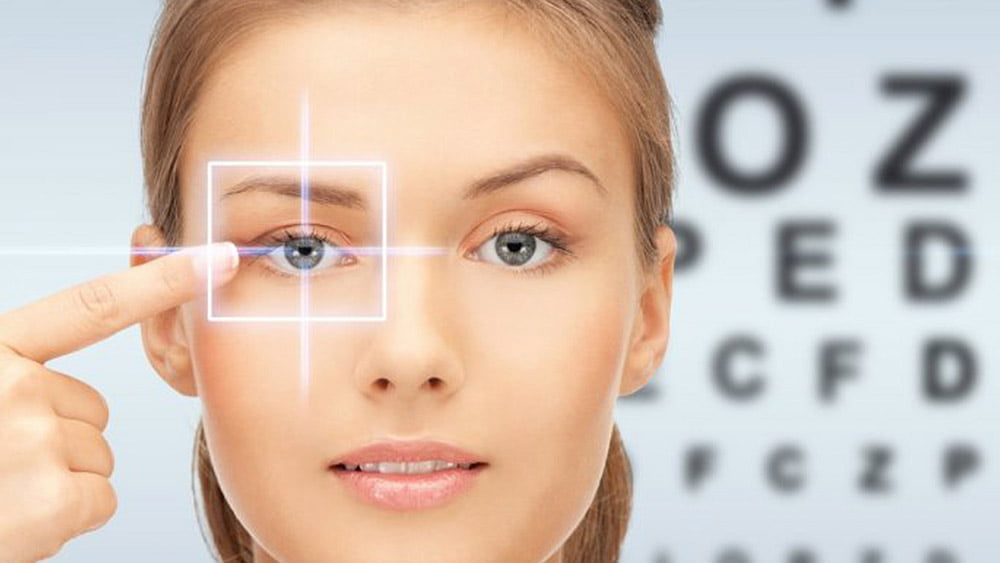Laser eye surgery is one of the most important methods of treatment that makes patients dispense with glasses and contact lenses.
Modern laser systems are used to improve surgical operations because these systems follow each type of specific properties and their results will be continuous and excellent during the coming periods.
Lasik :
It is considered one of the operations that formed a qualitative shift in the path of correction of eyesight by laser.
LASIK eye stages:
1. A cut in the cornea is made through a scalpel or a cutter called a microcircum
2. Fold this layer of the cornea aside
3. The cold laser is applied to the stroma base layer
4. The laser reshapes the surface in a degree of weakness
5. After completion, the cut and neutralized corneal layer is set aside to its previous position
6. The cornea is fully fused again within a short time without the need for surgical sutures
It is preferable that LASIK work be done after the age of 18 years, in order to ensure the consideration. The LASIK operation can be performed for any person who does not suffer from any diseases in the cornea, or that I do not have a conical cornea, and LASIK work is done for both eyes at the same time. Also one if necessary.
The success rate of LASIK eye surgery in the few cases of short-sightedness, the success rate reaches 98%, and in the event that the degree of short-sightedness reaches -6 or more, the success rate is 96% during the LASIK process, which is of course approximate.
Corneal transplantation :
A cornea transplant is performed when the primary cornea is infected due to its exposure to certain factors or diseases or viruses and makes it beyond repair. The cornea is taken from dead donors to be used in the corneal transplant operations.
Cornea, which is a transparent part that covers the eye from the outside and protects it from pollution and environmental factors. The function of the cornea is to break the light rays from their passage of the eye and has a very important role in activating the retina’s ability to focus on the image.
The cornea can be infected with a disease such as Herbs, which causes ulcers or fungal infection, etc. Also, a foreign object can enter the eye and affect the cornea so that it cannot be cured.
And there are eye diseases that may cause variation in the shape of the cornea: convex the cornea or make it conical, which affects the ability to see, in such cases, the patient needs a new corneal transplant (such as Keratoconus, cataract – Cataract)
operation steps :
Drops are distilled to expand the pupil of the eye with local anesthesia of the area or the kidney, and a thin incision is made in the cornea to remove all tissue of the cornea, put the alternative cornea in place and sew the new cornea.
There are other methods such as implantation of the lining of the cornea or the transplantation of a specific part of the cornea, using advanced equipment in surgery that depends on the laser
Retinal detachment:
Retinal detachment occurs when the posterior layer in the eye detaches, which contains neurons that are based on the sensing of light rays and converted into nerve signals and is sent through the optic nerve to the brain for analysis
And when the retinal detachment occurs in the eye, the blood supply to the nervous cells in the retina is removed, which leads to the removal of food and oxygen sources. The more the retinal detachment increases, the greater the probability of vision loss.
Retinal detachment operation :
There are several options for retinal detachments:
Laser or Cooling Processes: These two methods can correct rupture of the retina when diagnosed early.
– Fixing the air retina: This process is done and often succeeds in small cases of separation that are easy to close and through which a gas bubble is injected into the glass mixture and the vitreous is a gelatinous compound that separates the lens from the retina and this pushes the vitreous fluid to return the retina to its original location Natural.
– Fixation to the sclera: here the white outer layer of the eye is attached, or as the sclera is called with the retina to help the retina to return to its proper place.
Vitrectomy: This process helps in treating major separations inside and within the retina where the vitreous fluid is removed and replaced with a saline solution, which helps to treat these separations.
Femtosmile:
The laser is used to correct the errors and problems of the overall vision, and its results are good in cases of distance, shortness and deviation of vision, and it differs from LASIK, which needs an incision on the surface of the cornea in order to reach the tissues below.
The femtosmile technique works by means of a small continuous tube, the target tissue is determined by laser and then cautiously removed through the tube.
Femto Smile process steps:
The femtosmile process takes a short period of about 20 minutes and is done through local anesthesia. This short time for the operation depends on the accuracy of the technique, its quality and effectiveness and is considered safer than LASIK. It is carried out through a single step through the laser radiation that separates a layer of corneal tissue, and after that, the use of a laser VMT laser to induce A hole through the cornea is approximately 4 mm in length without the need to lift any part of the cornea, as in the case of LASIK technology.
Features of Femtosmile technology:
There is no pain during and after the operation.
You can follow daily life and expose the eye to water immediately after the operation (preferably not displayed)
The cornea is kept thick and not cut off
The procedure can be performed in cases of low thickness which are not suitable for Lasik or femtolasik
The corneal nerve responsible for tear secretions is preserved
Preserving epithelial membranes that are around and around the cornea










